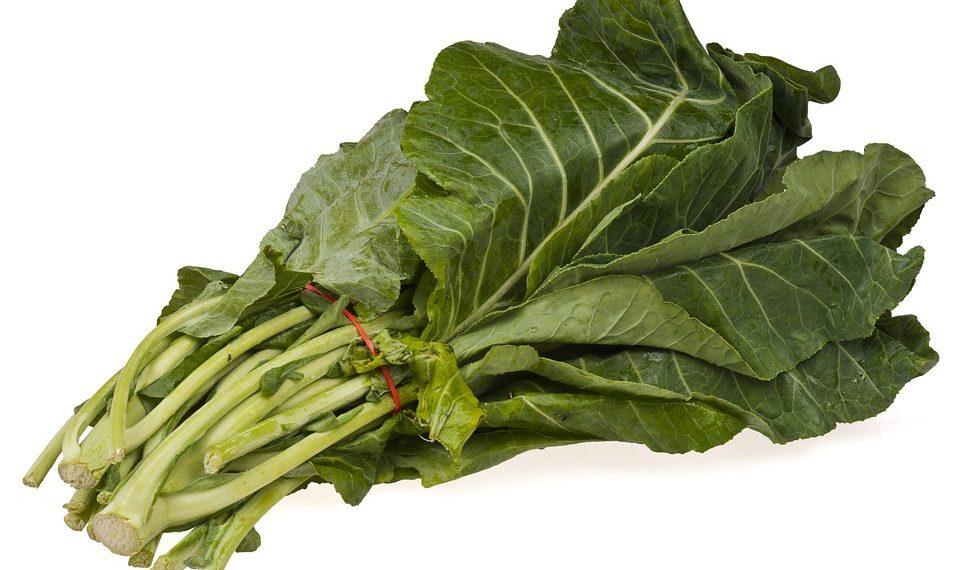Did you know that nearly 54 million Americans are at risk of osteoporosis? It’s a staggering statistic that makes you rethink your diet choices, especially when it comes to bone health. While many people often associate dairy with strong bones, greens, particularly leafy ones, can be just as potent, if not more so, in fortifying your skeletal structure. Let’s dive into five delicious ways to incorporate greens into your meals to help boost your bone strength.
Contents
1. Collard Greens: The Unsung Hero
Why Collard Greens?
When it comes to bone health, collard greens are like the underdog of the vegetable world. Packed with calcium, vitamin K, and other essential nutrients, these leafy greens are a powerhouse for maintaining strong bones. A single cup of cooked collard greens contains about 268 mg of calcium—almost a third of your daily needs!
How to Enjoy Them
Sautéed with Garlic and Olive Oil: One of the simplest ways to enjoy collard greens is to sauté them. Heat some olive oil in a pan, add minced garlic, and toss in chopped collard greens. Cook until they’re tender and vibrant. You can add a squeeze of lemon juice for a zesty finish.
Collard Green Wraps: Instead of using tortillas, use collard greens to wrap your favorite fillings. Think of it as a fresh take on a burrito. Fill them with quinoa, black beans, avocado, and salsa for a nutritious meal.
Pros and Cons
Pros: High in calcium, vitamin K, and antioxidants; versatile in meals.
Cons: Can be tough if not cooked properly; some people may find the taste a bit bitter.
2. Spinach: The Classic Green
Why Spinach?
Spinach is another leafy green that often steals the spotlight. It’s rich in calcium, magnesium, and vitamin K, which are all essential for bone health. A cup of cooked spinach has about 245 mg of calcium, making it a fantastic option for those looking to strengthen their bones.
How to Enjoy It
Spinach Salad with Strawberries and Walnuts: A fresh salad is an excellent way to enjoy spinach. Mix fresh spinach leaves with sliced strawberries, walnuts, and a drizzle of balsamic vinaigrette for a refreshing meal.
Creamed Spinach: Yes, you can indulge! Make a lighter version of creamed spinach using Greek yogurt instead of heavy cream. It’s rich, creamy, and packed with nutrients.
Pros and Cons
Pros: Easy to incorporate into various dishes; high in essential vitamins and minerals.
Cons: Contains oxalates, which can hinder calcium absorption; may not be suitable for those with kidney issues.
3. Kale: The Trendy Green
Why Kale?
Kale has gained popularity in recent years, and for good reason. It’s a nutrient-dense food that’s full of calcium, magnesium, and vitamin K. A cup of cooked kale provides approximately 94 mg of calcium. Plus, it’s a great source of antioxidants.
How to Enjoy It
Kale Chips: Who doesn’t love a crunchy snack? Toss kale leaves with olive oil and your favorite seasonings, then bake until crispy. These make for a healthy alternative to potato chips.
Kale Smoothie: Blend kale with bananas, almond milk, and a spoonful of peanut butter for a nutrient-packed smoothie. It’s a delicious way to start your day!
Pros and Cons
Pros: High in nutrients and antioxidants; versatile in both savory and sweet dishes.
Cons: Can be tough if not massaged or cooked; some may find the taste too strong.
4. Broccoli: The Powerhouse
Why Broccoli?
Broccoli is not just a side dish; it’s a bone-strengthening powerhouse. With high levels of calcium, vitamin K, and other essential nutrients, it’s a great addition to any diet. A cup of cooked broccoli contains about 62 mg of calcium.
How to Enjoy It
Broccoli Stir-Fry: Stir-fry broccoli with bell peppers, carrots, and your choice of protein for a quick and nutritious meal. The vibrant colors make it visually appealing and appetizing.
Broccoli and Cheese Casserole: For a comforting dish, make a broccoli and cheese casserole. Use whole grain breadcrumbs for a healthier twist.
Pros and Cons
Pros: High in fiber and nutrients; easy to cook and versatile.
Cons: Some people may experience gas or bloating; may not be appealing to kids.
5. Swiss Chard: The Colorful Green
Why Swiss Chard?
Swiss chard is often overlooked, but it’s a fantastic source of calcium and magnesium, both of which are crucial for bone health. It’s also rich in antioxidants, making it a great addition to your diet. A cup of cooked Swiss chard contains about 102 mg of calcium.
How to Enjoy It
Swiss Chard with Lemon and Feta: Sauté Swiss chard with garlic, a squeeze of lemon, and crumbled feta cheese for a delicious side dish. The tanginess of the feta complements the greens beautifully.
Stuffed Swiss Chard Leaves: Similar to collard green wraps, you can stuff Swiss chard leaves with a mixture of rice, lentils, and spices for a hearty meal.
Pros and Cons
Pros: Nutrient-rich and versatile; adds color to meals.
Cons: Can be slightly bitter if overcooked; some may find it challenging to prepare.
FAQs
1. Can I get enough calcium from greens alone?
While leafy greens can provide a good source of calcium, it’s essential to have a varied diet. Consider incorporating other calcium-rich foods like dairy, nuts, and fortified plant-based milks.
2. Are there any downsides to eating too much spinach?
Yes, spinach contains oxalates, which can interfere with calcium absorption. Moderation is key, and it’s best to balance spinach consumption with other calcium sources.
3. How can I make greens more appealing to kids?
Try blending greens into smoothies, hiding them in sauces, or making colorful salads. Presentation can also make a difference—let them help create fun shapes or designs on their plates!
4. How often should I include greens in my diet for bone health?
Aim to include a variety of greens in your diet several times a week. The more colorful and diverse your plate, the better for your overall health!
Conclusion
Incorporating greens into your diet is not just a trend; it’s a delicious and effective way to support your bone health. From collard greens to kale, each leafy green offers unique benefits that can help fortify your bones while tantalizing your taste buds. So, the next time you’re planning a meal, think greens—your bones will thank you!
Remember, research is ongoing, and while results are promising, individual needs can vary. Always consult a qualified healthcare provider before making changes to your health routine.
References
-
Weaver, C. M., & Heaney, R. P. (2006). Calcium. In: Modern Nutrition in Health and Disease. 10th ed. Philadelphia: Lippincott Williams & Wilkins.
https://www.ncbi.nlm.nih.gov/pmc/articles/PMC4850806/ -
Weaver, C. M., & Heaney, R. P. (2015). Calcium. Mayo Clinic Proceedings.
https://www.mayoclinicproceedings.org/article/S0025-6196(15)00019-0/fulltext -
Rude, R. K., & Singer, F. R. (2008). Magnesium. In: Modern Nutrition in Health and Disease. 10th ed. Philadelphia: Lippincott Williams & Wilkins.
https://www.ncbi.nlm.nih.gov/books/NBK20433/
This article is for educational purposes only and is not a substitute for professional medical advice. Always consult a qualified healthcare provider before making changes to your health routine.
Get Your FREE Natural Health Guide!
Subscribe now and receive our exclusive ebook packed with natural health tips, practical wellness advice, and easy lifestyle changes — delivered straight to your inbox.














